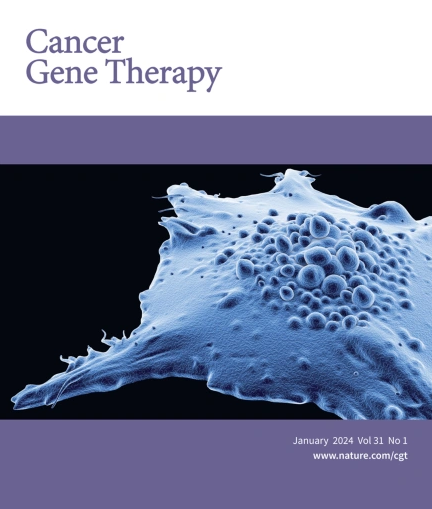The involvement of lncRNA EMSLR in the disulfidptosis and progression of endometrial carcinoma
IF 5
3区 医学
Q1 BIOTECHNOLOGY & APPLIED MICROBIOLOGY
引用次数: 0
Abstract
The incidence of endometrial cancer (EC) continues to rise. Disulfidptosis, a novel form of cell death, may represent a potential therapeutic target in EC. Through bioinformatic analysis of The Cancer Genome Atlas (TCGA) database, E2F1 mRNA-stabilizing lncRNA (EMSLR) was identified as a lncRNA related to disulfidptosis in EC. Functional assays, including cell proliferation and xenograft assays, demonstrated that knockdown of EMSLR significantly impeded EC cell proliferation, whereas overexpression of EMSLR promoted cell viability. Additionally, EMSLR was found to be associated with glucose uptake and NADPH production in glucose-restricted culture conditions. Moreover, downregulation of EMSLR markedly increased cell death and induced cytoskeletal collapse under glucose deprivation, as evidenced by F-actin and cell death staining. Notably, we observed a strong correlation between EMSLR and the c-MYC-GLUT1 pathway. Mechanistically, EMSLR was found to mediate the expression and nuclear translocation of c-MYC, thereby regulating the progression of EC and its associated disulfidptosis. In conclusion, EMSLR is identified as a disulfidptosis-related gene in endometrial cancer. Elucidating the function and molecular mechanisms of EMSLR in EC presents a promising avenue for therapeutic intervention in patients.

lncRNA EMSLR在子宫内膜癌的双重下垂和进展中的作用。
子宫内膜癌(EC)的发病率持续上升。双曲下垂是一种新的细胞死亡形式,可能是EC的潜在治疗靶点。通过对The Cancer Genome Atlas (TCGA)数据库的生物信息学分析,鉴定出E2F1 mrna - stabilationlncrna (EMSLR)是与EC中二硫垂症相关的lncRNA。功能分析,包括细胞增殖和异种移植试验,表明EMSLR的敲低显著阻碍了EC细胞的增殖,而EMSLR的过表达促进了细胞的活力。此外,在葡萄糖限制培养条件下,EMSLR被发现与葡萄糖摄取和NADPH产生有关。此外,f -肌动蛋白和细胞死亡染色表明,EMSLR的下调显著增加了葡萄糖剥夺下的细胞死亡和诱导细胞骨架塌陷。值得注意的是,我们观察到EMSLR与c-MYC-GLUT1通路之间存在很强的相关性。在机制上,EMSLR被发现介导c-MYC的表达和核易位,从而调节EC的进展及其相关的双侧塌陷。综上所述,EMSLR在子宫内膜癌中被确定为二硫塌陷相关基因。阐明EMSLR在EC中的功能和分子机制为患者的治疗干预提供了一条有希望的途径。
本文章由计算机程序翻译,如有差异,请以英文原文为准。
求助全文
约1分钟内获得全文
求助全文
来源期刊

Cancer gene therapy
医学-生物工程与应用微生物
CiteScore
10.20
自引率
0.00%
发文量
150
审稿时长
4-8 weeks
期刊介绍:
Cancer Gene Therapy is the essential gene and cellular therapy resource for cancer researchers and clinicians, keeping readers up to date with the latest developments in gene and cellular therapies for cancer. The journal publishes original laboratory and clinical research papers, case reports and review articles. Publication topics include RNAi approaches, drug resistance, hematopoietic progenitor cell gene transfer, cancer stem cells, cellular therapies, homologous recombination, ribozyme technology, antisense technology, tumor immunotherapy and tumor suppressors, translational research, cancer therapy, gene delivery systems (viral and non-viral), anti-gene therapy (antisense, siRNA & ribozymes), apoptosis; mechanisms and therapies, vaccine development, immunology and immunotherapy, DNA synthesis and repair.
Cancer Gene Therapy publishes the results of laboratory investigations, preclinical studies, and clinical trials in the field of gene transfer/gene therapy and cellular therapies as applied to cancer research. Types of articles published include original research articles; case reports; brief communications; review articles in the main fields of drug resistance/sensitivity, gene therapy, cellular therapy, tumor suppressor and anti-oncogene therapy, cytokine/tumor immunotherapy, etc.; industry perspectives; and letters to the editor.
 求助内容:
求助内容: 应助结果提醒方式:
应助结果提醒方式:


